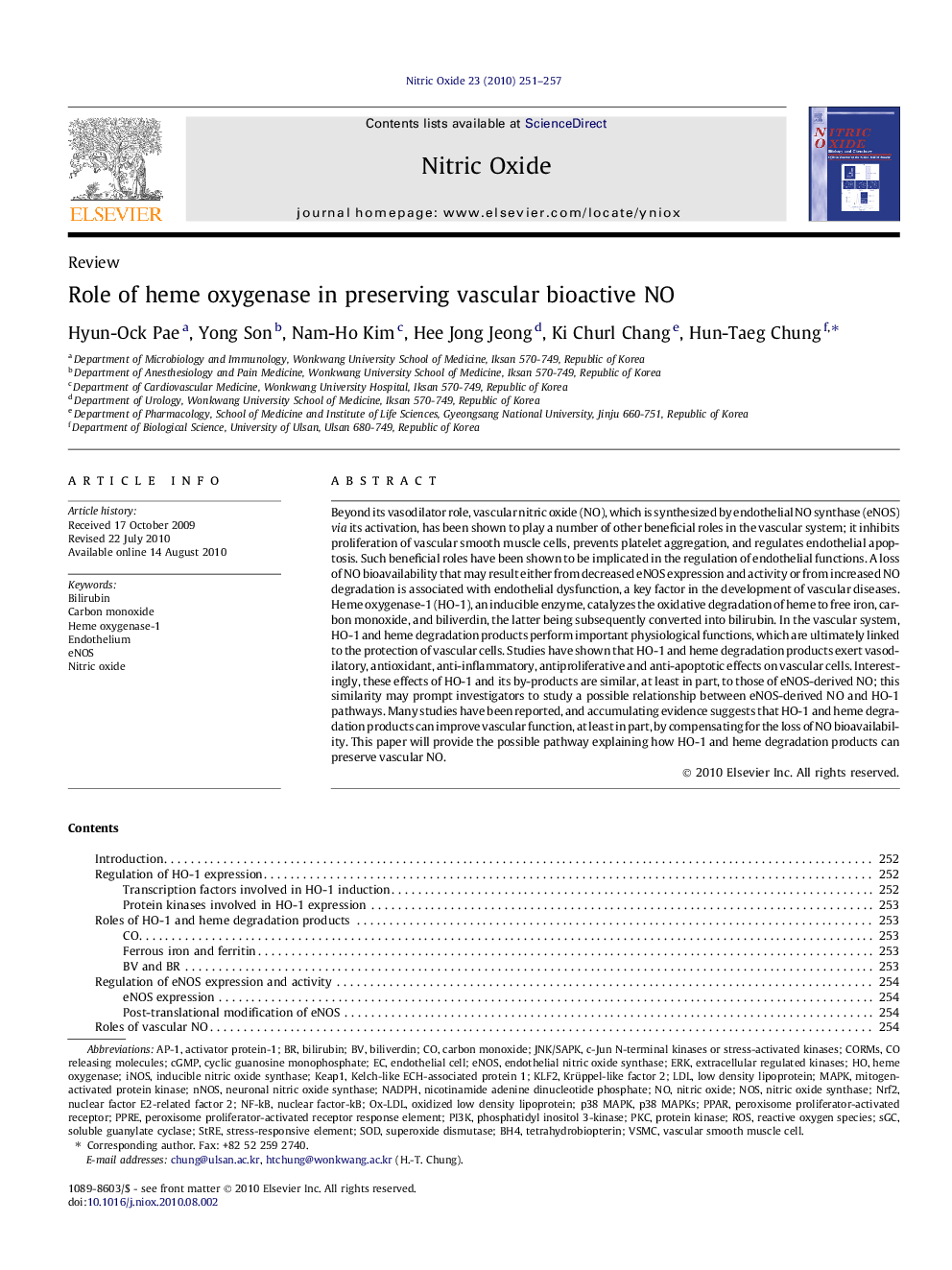| Article ID | Journal | Published Year | Pages | File Type |
|---|---|---|---|---|
| 2001324 | Nitric Oxide | 2010 | 7 Pages |
Beyond its vasodilator role, vascular nitric oxide (NO), which is synthesized by endothelial NO synthase (eNOS) via its activation, has been shown to play a number of other beneficial roles in the vascular system; it inhibits proliferation of vascular smooth muscle cells, prevents platelet aggregation, and regulates endothelial apoptosis. Such beneficial roles have been shown to be implicated in the regulation of endothelial functions. A loss of NO bioavailability that may result either from decreased eNOS expression and activity or from increased NO degradation is associated with endothelial dysfunction, a key factor in the development of vascular diseases. Heme oxygenase-1 (HO-1), an inducible enzyme, catalyzes the oxidative degradation of heme to free iron, carbon monoxide, and biliverdin, the latter being subsequently converted into bilirubin. In the vascular system, HO-1 and heme degradation products perform important physiological functions, which are ultimately linked to the protection of vascular cells. Studies have shown that HO-1 and heme degradation products exert vasodilatory, antioxidant, anti-inflammatory, antiproliferative and anti-apoptotic effects on vascular cells. Interestingly, these effects of HO-1 and its by-products are similar, at least in part, to those of eNOS-derived NO; this similarity may prompt investigators to study a possible relationship between eNOS-derived NO and HO-1 pathways. Many studies have been reported, and accumulating evidence suggests that HO-1 and heme degradation products can improve vascular function, at least in part, by compensating for the loss of NO bioavailability. This paper will provide the possible pathway explaining how HO-1 and heme degradation products can preserve vascular NO.
